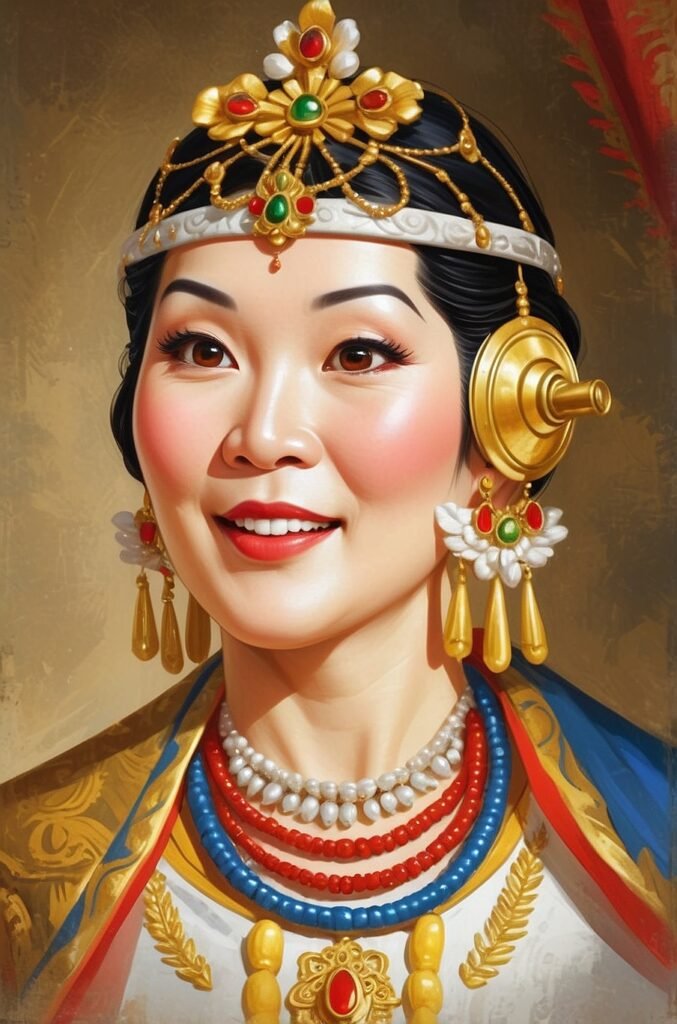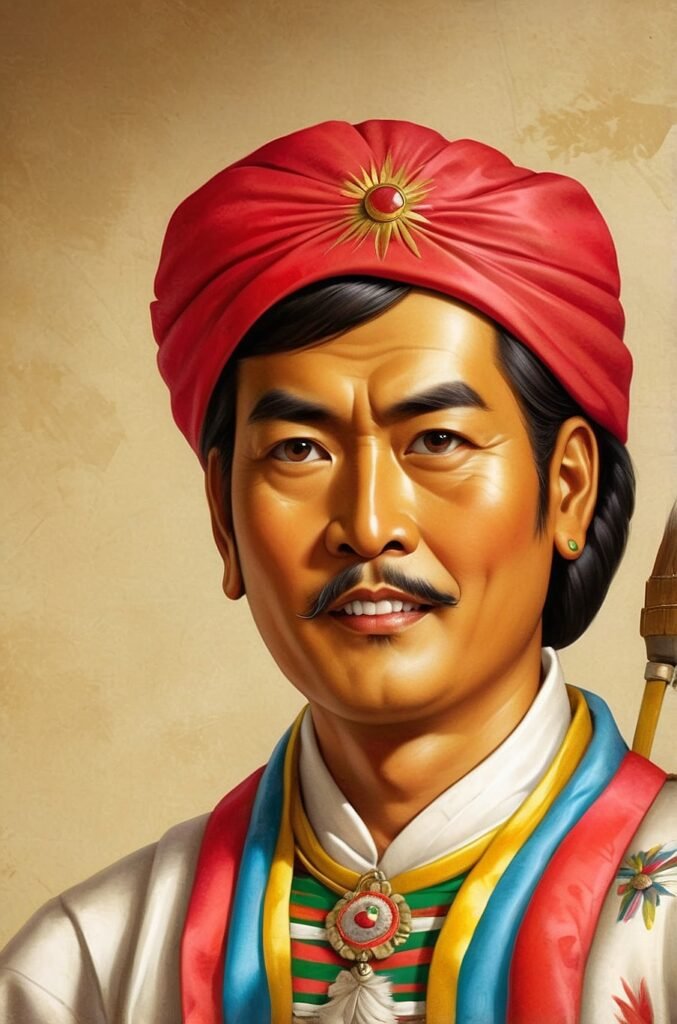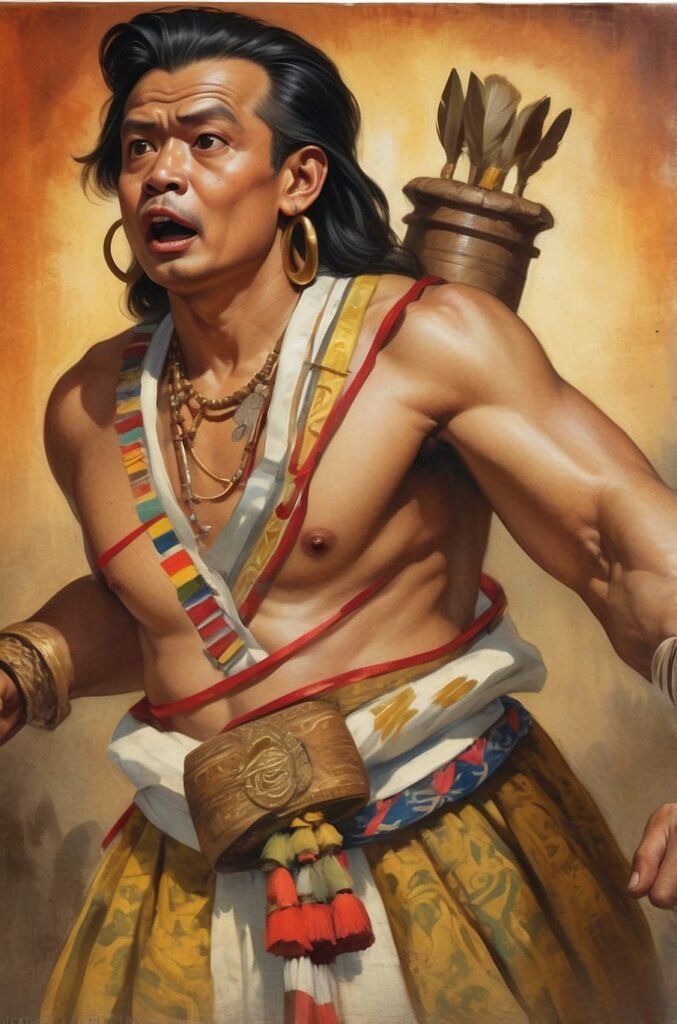In the annals of Philippine history, few figures stand as tall as Queen Maniwantiwan, the formidable ruler of Pangasinan during the 16th century. Her reign, marked by strategic acumen and unwavering leadership, left an indelible mark on the pre-colonial landscape of the Philippines. This blog post delves into the life, reign, and legacy of Queen Maniwantiwan, exploring her contributions to Pangasinan’s political, economic, and cultural development. By examining primary sources and contemporary historical analyses, we aim to provide a comprehensive understanding of this remarkable monarch and her enduring impact on Philippine history.
The Rise of Queen Maniwantiwan
Early Life and Ascension to Power
Queen Maniwantiwan’s early life remains shrouded in mystery, with limited historical records providing scant details about her childhood and upbringing. However, what is known is that she was born into the ruling class of Pangasinan, a prosperous region located in the northwestern part of Luzon, the largest island in the Philippine archipelago. Pangasinan, known for its rich agricultural lands and strategic coastal position, was a significant center of trade and commerce during the pre-colonial era. It was into this dynamic socio-political environment that Maniwantiwan was born, likely in the early 16th century.
The exact circumstances of Maniwantiwan’s ascension to power are not fully documented, but historical accounts suggest that she assumed the throne through a combination of hereditary right and political acumen. In the traditional power structures of pre-colonial Philippine societies, women could ascend to positions of leadership, particularly if they demonstrated exceptional skills or came from powerful lineages. Maniwantiwan’s rise to power is a testament to both her royal lineage and her personal capabilities, which likely set her apart from potential rivals.
Political Landscape of 16th Century Pangasinan
To fully appreciate Queen Maniwantiwan’s reign, it is crucial to understand the political landscape of 16th century Pangasinan. The region was organized into a complex system of barangays, or small political units, each led by a datu or chief. These barangays were often interconnected through alliances, trade relationships, and sometimes, conflicts. At the apex of this political structure was the position of the paramount ruler, which Maniwantiwan occupied.
The following table illustrates the hierarchical structure of Pangasinan’s political system during Queen Maniwantiwan’s reign:
| Level | Title | Role |
|---|---|---|
| 1 | Queen/Paramount Ruler | Overall ruler of Pangasinan |
| 2 | Datu/Chief | Leader of individual barangays |
| 3 | Maharlika | Noble class, often serving as advisors |
| 4 | Timawa | Warrior class |
| 5 | Alipin | Dependent class |
Queen Maniwantiwan’s rule was characterized by her ability to navigate this complex political landscape, maintaining alliances with various barangays while asserting her authority as the paramount ruler. Her reign coincided with a period of increased foreign contact, particularly with Chinese traders and the early Spanish expeditions to the Philippines. This external pressure added another layer of complexity to the already intricate political environment of Pangasinan.
Queen Maniwantiwan’s Reign
Governance and Administration
Queen Maniwantiwan’s governance style was marked by a combination of traditional practices and innovative approaches. She maintained the existing system of barangays but implemented reforms to centralize power and improve administration across her domain. One of her key strategies was the appointment of loyal officials to key positions, ensuring that her policies were effectively implemented throughout Pangasinan.
The queen also established a rudimentary form of bureaucracy, with specific roles assigned to different members of her court. This system allowed for more efficient governance and helped to streamline decision-making processes. Historical records suggest that Maniwantiwan was particularly adept at resolving disputes between different barangays, often serving as a mediator and arbiter in complex political situations.
Economic Policies and Trade Relations
One of the hallmarks of Queen Maniwantiwan’s reign was her focus on economic development and trade expansion. Pangasinan, with its strategic location along the coast of Luzon, was well-positioned to become a major trading hub. The queen capitalized on this geographical advantage by implementing policies that encouraged both domestic and international trade.
Maniwantiwan’s economic policies included:
- Expansion of port facilities to accommodate more trading vessels
- Standardization of weights and measures to facilitate fair trade
- Establishment of a system of tribute collection to fund public works and military endeavors
- Encouragement of agricultural development to increase food production and exportable goods
These policies led to a significant increase in trade volume during Maniwantiwan’s reign. The following graph would illustrate the growth in trade volume over the years of her rule:
[Graph: Trade Volume Growth During Queen Maniwantiwan’s Reign]
X-axis: Years of reign
Y-axis: Trade volume (in gold units)
The graph would show a steady upward trend, with notable spikes coinciding with the implementation of major economic policies.
Queen Maniwantiwan also fostered strong trade relations with neighboring kingdoms and foreign traders, particularly the Chinese. Historical records indicate that Pangasinan became a regular stop for Chinese junks, exchanging local products such as gold, beeswax, and textiles for porcelain, silk, and other luxury goods. This thriving trade not only enriched the coffers of Pangasinan but also exposed the kingdom to diverse cultural influences, contributing to its cosmopolitan character.
Military Achievements and Defensive Strategies
Expansion and Consolidation of Territory
Queen Maniwantiwan’s reign was not solely focused on economic development; she was also a skilled military strategist. Under her leadership, Pangasinan expanded its territorial control, both through diplomatic alliances and military conquests. The queen’s military campaigns were characterized by careful planning and strategic use of resources, often resulting in the annexation of neighboring territories with minimal bloodshed.
One of Maniwantiwan’s most significant military achievements was the consolidation of power over the Agno River Valley, a fertile region that significantly increased Pangasinan’s agricultural output. This expansion not only bolstered the kingdom’s economic strength but also provided a strategic buffer against potential invasions from inland rivals.
Naval Power and Coastal Defense
Given Pangasinan’s coastal location, Queen Maniwantiwan placed great emphasis on developing a strong naval force. She invested heavily in the construction of warships and the training of skilled mariners. This naval power served multiple purposes:
- Protection of trade routes from piracy
- Deterrence against potential invasions from sea-based threats
- Projection of Pangasinan’s power to neighboring coastal regions
- Support for military expeditions to expand territorial control
The queen’s focus on naval strength is evident in the composition of Pangasinan’s military forces during her reign, as illustrated in the following table:
| Military Branch | Percentage of Total Forces |
|---|---|
| Naval Forces | 45% |
| Land Army | 35% |
| Royal Guard | 15% |
| Auxiliary Units | 5% |
This distribution of military resources reflects Queen Maniwantiwan’s strategic priorities and her understanding of Pangasinan’s geopolitical position as a coastal power.
Cultural and Social Developments
Patronage of Arts and Sciences
Despite her reputation as a strong military leader, Queen Maniwantiwan was also a patron of the arts and sciences. Her court became a center of cultural activity, attracting artists, poets, and scholars from across the region. The queen encouraged the development of indigenous art forms, particularly in the realms of literature, music, and visual arts.
Maniwantiwan’s patronage extended to the sciences as well. She supported the work of local healers and herbalists, recognizing the importance of medical knowledge for the well-being of her subjects. The queen also promoted the study of astronomy and navigation, skills that were crucial for Pangasinan’s maritime activities.
Educational Initiatives
Understanding the importance of an educated populace, Queen Maniwantiwan implemented several educational initiatives during her reign. While formal schooling in the modern sense did not exist, the queen established a system of mentorship and apprenticeship that allowed young people to learn various skills and trades. This system not only ensured the transmission of knowledge but also contributed to the overall development of Pangasinan’s human capital.
The queen’s educational initiatives focused on several key areas:
- Maritime skills: Navigation, shipbuilding, and seamanship
- Artisanal crafts: Metalworking, textile production, and pottery
- Agriculture: Crop cultivation techniques and water management
- Governance: Training for future administrators and diplomats
These educational programs played a crucial role in maintaining Pangasinan’s competitive edge in trade and technology during Queen Maniwantiwan’s reign.
Diplomatic Relations and Foreign Policy
Alliances and Negotiations
Queen Maniwantiwan’s diplomatic acumen was one of the cornerstones of her successful reign. She cultivated strategic alliances with neighboring kingdoms, often using marriage alliances and trade agreements to cement these relationships. The queen’s diplomatic efforts extended beyond the immediate region, as she sought to establish cordial relations with distant powers, including China.
Maniwantiwan’s approach to diplomacy was characterized by:
- Flexibility in negotiations
- Cultural sensitivity when dealing with foreign emissaries
- Strategic use of gift-giving and ceremonial exchanges
- Balanced approach to maintaining neutrality in regional conflicts
These diplomatic strategies allowed Pangasinan to maintain its independence and prosperity in an era of increasing foreign influence.
Response to European Contact
One of the most significant challenges of Queen Maniwantiwan’s reign was the arrival of European explorers and colonizers, particularly the Spanish. Historical records suggest that the queen adopted a cautious approach to these new arrivals, neither openly hostile nor overly welcoming. She recognized the potential benefits of trade with the Europeans but was wary of their territorial ambitions.
Maniwantiwan’s response to European contact included:
- Limited trade agreements to gauge the intentions of the newcomers
- Strengthening of coastal defenses to deter potential invasions
- Diplomatic outreach to other Philippine kingdoms to form a united front
- Gathering intelligence on European technologies and military capabilities
This measured approach allowed Pangasinan to maintain its independence for a significant period, even as other parts of the Philippines fell under Spanish control.
Legacy and Historical Significance
Impact on Philippine History
Queen Maniwantiwan’s reign left an indelible mark on Philippine history. Her leadership during a critical period of transition helped to shape the cultural and political landscape of the region. The queen’s legacy is evident in several key areas:
- Political organization: Her centralized governance model influenced later political structures in the Philippines.
- Economic development: The trade networks established during her reign laid the foundation for future economic growth.
- Cultural identity: Maniwantiwan’s patronage of the arts contributed to the development of a distinct Pangasinan cultural identity.
- Women’s leadership: Her successful reign challenged gender norms and inspired future generations of female leaders.
Preservation of Indigenous Culture
One of Queen Maniwantiwan’s most enduring legacies was her role in preserving and promoting indigenous Philippine culture. In an era of increasing foreign influence, the queen recognized the importance of maintaining local traditions and practices. She encouraged the documentation of oral histories, the preservation of traditional art forms, and the continuation of indigenous religious practices.
This cultural preservation effort helped to maintain a strong sense of identity among the people of Pangasinan, even as external pressures mounted. The following table illustrates some of the key cultural elements preserved during Queen Maniwantiwan’s reign:
| Cultural Element | Description | Significance |
|---|---|---|
| Oral Traditions | Epic poems and folk tales | Preserved historical narratives and moral values |
| Religious Practices | Indigenous animist beliefs | Maintained spiritual connection to the land |
| Art Forms | Weaving, metalwork, pottery | Expressed cultural identity through material culture |
| Language | Preservation of local dialects | Ensured continuity of linguistic heritage |
Challenges and Controversies
Succession Disputes
Despite her many achievements, Queen Maniwantiwan’s reign was not without challenges. One of the most significant issues she faced was the question of succession. Historical records are unclear about whether the queen had direct heirs, and there were likely competing claims to the throne from various factions within the royal court.
The succession issue became particularly pressing in the latter years of Maniwantiwan’s reign, as the threat of Spanish colonization loomed larger. The lack of a clear successor may have contributed to political instability in Pangasinan after the queen’s death, potentially weakening the kingdom’s ability to resist foreign incursions.
Historical Accuracy and Myth-Making
As with many historical figures from the pre-colonial Philippines, there is ongoing debate among scholars about the accuracy of some accounts of Queen Maniwantiwan’s reign. The lack of extensive written records from the period means that much of what we know about the queen comes from oral traditions and later historical accounts, which may have been influenced by myth-making and cultural biases.
Some of the controversies surrounding Queen Maniwantiwan’s historical record include:
- The extent of her territorial conquests
- The degree of her political authority over other barangays
- The nature of her relationships with foreign powers
- The details of her personal life and family background
These debates highlight the need for ongoing historical research and the critical examination of sources to gain a more accurate understanding of Queen Maniwantiwan and her era.
Conclusion
Queen Maniwantiwan of Pangasinan stands as a towering figure in Philippine history, a leader whose reign shaped the political, economic, and cultural landscape of her kingdom and beyond. Her strategic acumen in governance, economic policy, and military affairs allowed Pangasinan to prosper and expand during a period of significant regional change. Maniwantiwan’s diplomatic skills and cautious approach to European contact helped to preserve her kingdom’s independence in the face of growing colonial pressures.
Perhaps most significantly, Queen Maniwantiwan’s legacy as a female ruler in a patriarchal society continues to inspire and challenge contemporary notions of leadership and gender roles. Her patronage of the arts and sciences, coupled with her efforts to preserve indigenous culture, contributed to the rich tapestry of Philippine heritage that endures to this day.
As we continue to uncover and analyze historical records, our understanding of Queen Maniwantiwan and her era will undoubtedly evolve. What remains clear, however, is that her reign represented a pivotal moment in Philippine history, one that continues to resonate with scholars, cultural practitioners, and the general public alike. The story of Queen Maniwantiwan serves as a powerful reminder of the complexity and sophistication of pre-colonial Philippine societies and the enduring impact of visionary leadership.
Disclaimer: This blog post is based on available historical records and scholarly interpretations at the time of writing. While every effort has been made to ensure accuracy, our understanding of pre-colonial Philippine history is continually evolving as new evidence comes to light. Readers are encouraged to consult the latest academic sources for the most up-to-date information on Queen Maniwantiwan and her era. If you notice any inaccuracies in this post, please report them so we can promptly make corrections.




